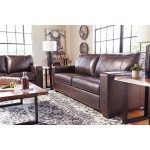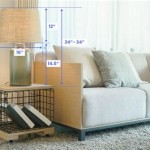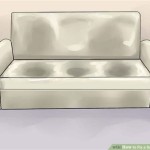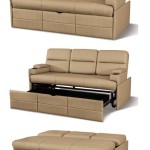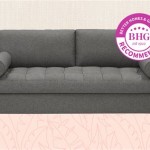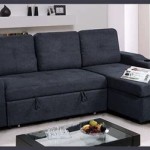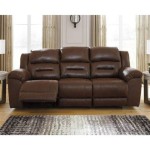How Long Do Bonded Leather Sofas Last?
The lifespan of a bonded leather sofa is a common concern for prospective buyers. Bonded leather, often presented as a more affordable alternative to genuine leather, possesses a unique composition that significantly influences its durability and longevity. Understanding the factors that contribute to its lifespan is crucial for making an informed purchasing decision and managing expectations.
Bonded leather differs substantially from top-grain or full-grain leather. It's manufactured by shredding leather scraps and fibers, then binding them together using polyurethane or latex adhesives. This mixture is then typically applied to a paper or fabric backing, and embossed to give it a leather-like texture. The resulting material offers a lower cost point, but also exhibits distinct performance characteristics that impact its overall lifespan. The expected lifespan is, generally, shorter than that of genuine leather sofas.
Multiple aspects dictate how long a bonded leather sofa will maintain its appearance and structural integrity. User habits, environmental conditions, maintenance practices, and the quality of the bonded leather itself all play a significant role. The severity of use, such as the number of occupants regularly using the sofa and the presence of pets or children, considerably impacts the rate of wear and tear.
Environmental factors, specifically humidity and temperature fluctuations, can affect the adhesive and the backing material of bonded leather. Improper cleaning methods, harsh chemicals, and a lack of regular maintenance can also contribute to premature degradation. Understanding these influences is essential for maximizing the lifespan of a bonded leather sofa.
Key Point 1: Factors Influencing the Lifespan
The ultimate lifespan of a bonded leather sofa is a complex equation determined by several interacting elements. The intrinsic quality of the bonded leather itself is a primary determinant. Higher grades of bonded leather tend to incorporate a higher percentage of leather fibers and utilize more durable adhesives, resulting in improved resistance to wear and tear. Conversely, lower-quality bonded leather may contain a lower proportion of leather content and be more susceptible to cracking, peeling, and fading.
Usage patterns are another critical consideration. A sofa used infrequently in a formal living room will likely experience a significantly longer lifespan than one used daily in a family room by multiple individuals. The presence of pets introduces additional stresses, as their claws can scratch and damage the surface, and their fur can contribute to the accumulation of dirt and oils. Similarly, young children may be more prone to spills and roughhousing, accelerating the wear and tear on the sofa.
Environmental conditions play a significant, often underestimated, role. Extreme temperature fluctuations and persistent humidity can compromise the integrity of the bonding agents and the backing material. Low humidity can cause the bonded leather to dry out and become brittle, making it more prone to cracking. Conversely, high humidity can promote the growth of mold and mildew, which can damage the material and weaken the adhesive bonds. Direct sunlight exposure can also cause the bonded leather to fade and deteriorate over time. Placement of the sofa away from direct sunlight and sources of heat or excessive moisture will contribute to a longer life.
Finally, maintenance practices profoundly influence the lifespan of a bonded leather sofa. Regular cleaning to remove dirt, dust, and oils is essential. However, it's crucial to use appropriate cleaning products specifically designed for bonded leather. Harsh chemicals and abrasive cleaners can strip the surface and damage the material. Routine conditioning can also help to keep the bonded leather supple and prevent it from drying out and cracking. Following the manufacturer's recommended cleaning and maintenance instructions is vital for preserving the sofa's appearance and extending its lifespan.
Key Point 2: Common Problems and Signs of Wear
Bonded leather, although attempting to mimic genuine leather's aesthetics, is susceptible to specific failure modes that indicate its age and condition. One of the most frequently observed issues is peeling. This occurs when the polyurethane or latex coating begins to separate from the underlying leather fibers or backing material. Peeling is often exacerbated by friction, abrasion, and exposure to moisture or temperature fluctuations.
Cracking is another common problem, particularly in areas subject to frequent use and stretching, such as the seat cushions and armrests. Cracking can occur due to the bonded leather drying out and becoming brittle, or due to the adhesive bonds weakening over time. Once a crack develops, it can quickly spread and worsen, eventually leading to significant damage.
Fading is also a concern, especially for sofas exposed to direct sunlight. The dyes used to color the bonded leather can break down over time when exposed to ultraviolet radiation, resulting in a loss of color intensity and vibrancy. This can leave the sofa looking dull and worn.
Another common issue is staining. Bonded leather is generally more porous than genuine leather, making it more susceptible to absorbing spills and stains. If spills are not cleaned up promptly and thoroughly, they can penetrate the surface and leave permanent marks. Regular cleaning and the use of protective coatings can help to minimize the risk of staining.
Beyond visible surface degradation, the structural integrity of the sofa can also be compromised over time. Springs can sag, frames can loosen, and cushions can lose their shape and support. These issues can affect the overall comfort and usability of the sofa, even if the bonded leather itself is still in relatively good condition. Consider rotating and flipping cushions to promote even wear.
Key Point 3: Average Lifespan and Extending Durability
While the exact lifespan of a bonded leather sofa can vary considerably based on the factors described above, a realistic expectation is typically between 2 to 5 years. This is noticeably shorter than the lifespan of sofas upholstered in genuine leather, which can often last for 10 years or more with proper care. However, with meticulous attention to maintenance and proactive measures to mitigate wear and tear, it's possible to extend the lifespan of a bonded leather sofa beyond this average range.
Preventive measures are crucial in maximizing a bonded leather sofa's durability. Regularly cleaning the sofa with a mild, pH-neutral cleaner designed specifically for bonded leather helps remove dirt, dust, and oils that can contribute to surface degradation. Conditioning the bonded leather with a specialized conditioner can help to keep it supple and prevent it from drying out and cracking. Protecting the sofa from direct sunlight and extreme temperature fluctuations can also help to prevent fading and premature wear.
Using slipcovers or throws can provide an extra layer of protection against spills, stains, and scratches. Slipcovers are particularly useful in households with pets or young children. Rotating and flipping cushions regularly can help to distribute wear evenly and prevent certain areas from becoming overly worn or damaged.
Promptly addressing any minor damage, such as small tears or cracks, can prevent them from worsening over time. Leather repair kits are available that can be used to patch up minor imperfections and prevent them from spreading. While these repairs may not be invisible, they can significantly extend the life of the sofa.
When cleaning spills, it's essential to act quickly and use a clean, absorbent cloth to blot the spill rather than rubbing it. Rubbing can spread the spill and force it deeper into the bonded leather's pores. Avoid using harsh chemicals or abrasive cleaners, as these can damage the surface and cause discoloration.
While bonded leather sofas offer an affordable entry point into the world of leather-look furniture, understanding their limitations and implementing proactive care strategies is essential for maximizing their lifespan and maintaining their appearance. By carefully considering the factors that influence durability and adopting appropriate maintenance practices, consumers can extend the usable life of their bonded leather sofas and enjoy their investment for as long as possible.

How Long Do Leather Sofas Really Last Medic

How Long Does A 100 Real Leather Sofa Last Currier S Furniture

About Bonded Leather Magic Mender

Bonded Leather The Truth On Quality Cost Durability

What Is Bonded Leather Honey

How Long Does Bonded Leather Last Domini

Bonded Leather The Truth On Quality Cost Durability

6 Differences Between Real Vs Bonded Faux Leather In 2024

How To Fix Bonded Leather Ling Von Baer

Bonded Leather Vs Real What S The Difference We Can Fix That

